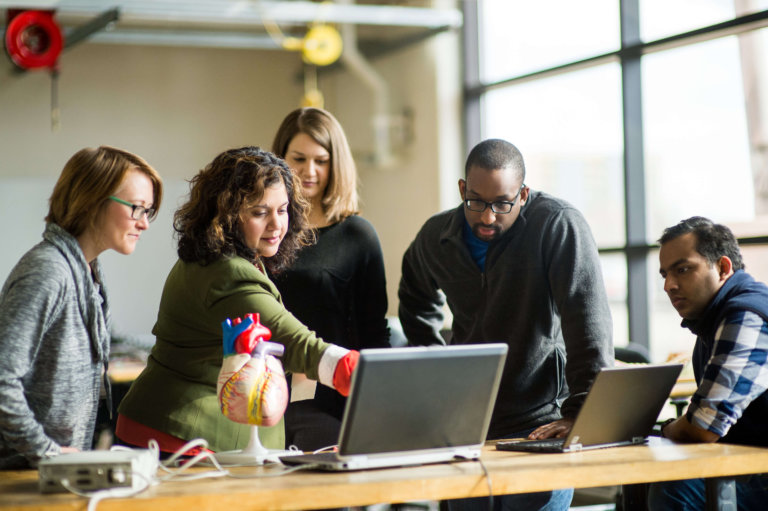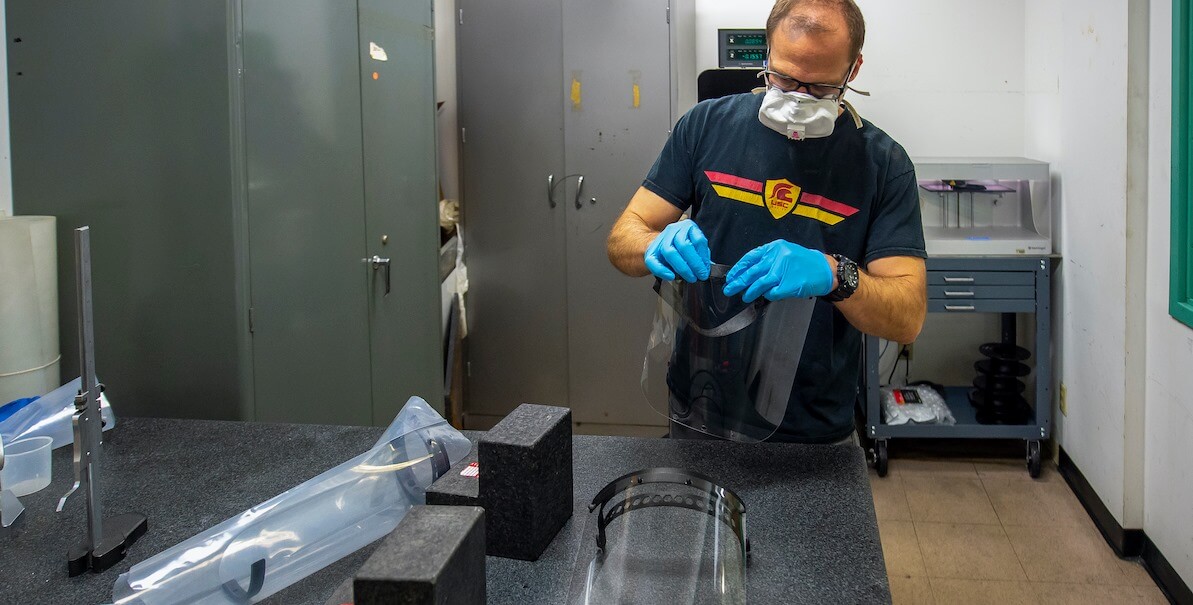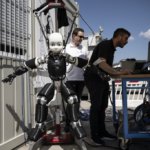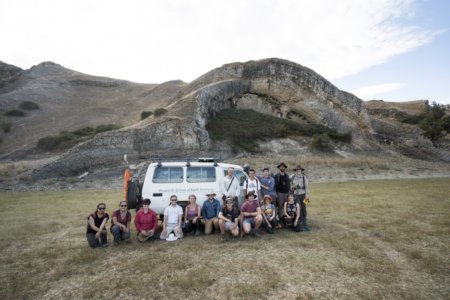
The future of this planet rests on what we can achieve in this decade. In his opening remarks at the Sustainable Development Goals Moment event last September, United Nations Secretary-General António Guterres referred to how the founders of the UN “raised their eyes above the horizon and planned a better, safer future” in the midst of the greatest international crisis of their time. So must we, he continued, “as we strike out for a world of dignity and opportunity for all on a healthy planet.” “Together, let us make this a decade of action; a decade of ambition; a decade of transformation; a decade of hope and peace.”
Engineers — the experts who apply science to convert nature’s resources to human use optimally — are central to our Decade of Action. To solve the climate crisis, eradicate poverty and hunger, and achieve all 17 SDGs, we will need structures, machines, apparatus and processes — innovative engineers are the bedrock of this vision.
If you plan to earn the skills, knowledge and experience to join this illustrious group, consider these leading engineering schools in the US.
Grand Valley State University

Source: Grand Valley State University
Hands-on. Practical. Industry-focused. 100% guarantee of experiential learning during studies. Nearly 100% employment upon graduation. 8,000 alumni with work experience in high-demand fields. These descriptors define an education at the Grand Valley State University (GVSU) Seymour and Esther Padnos College of Engineering & Computing (PCEC).
PCEC offers the following programmes in rapid-growth STEM fields: Computing & Information Systems (several undergraduate and graduate disciplines such as applied computer science, cybersecurity, and information technology), Engineering (several undergraduate and graduate disciplines such as biomedical engineering, computer engineering, and product design & manufacturing engineering); Occupational Safety & Health Management (undergraduate only) and Professional Science Master’s Programmes (several graduate disciplines such as applied statistics, data science & analytics, and health informatics & bioinformatics).
Each programme prepares students to become highly successful professionals in their field upon graduation. How? By beginning project-based learning in students’ first year. Students gain valuable work experience through industry internships or co-op placements, in which they collaborate with professionals to solve real industry problems and engage in applied research and development.
Internships or co-ops are required components of all PCEC programmes — all are paid, offset the cost of tuition (which is modest, and set at the same rate as domestic students at the graduate level), and often lead to job offers upon graduation.
GVSU faculty are known for their passion for teaching and commitment to student success. Small class sizes taught by dedicated full-time faculty members — with expertise and industry experience — provide personalised attention and opportunities for close collaboration. PCEC undergraduate and graduate students have 24/7 access to state-of-the-art facilities, including a wide variety of project spaces, laboratories, and equipment.
GVSU is an internationally-friendly institution, ranking sixth nationally in its category for the number of students who studied abroad in 2018-19, according to the Institute of International Education. To ensure international students’ success, the GVSU Padnos International Center assists with a diverse range of issues, from finding a community on campus to obtaining OPT. As all PCEC programmes are STEM-designated, international students can qualify for up to three years of work experience in the US after graduation.
GVSU is based in Grand Rapids — a vibrant city on the US west coast of Michigan; ranked first in “7 Places to Go in 2020” by Jetsetter for its diverse dining options, arts and music, outdoor activities, festivals, and sports. Grand Rapids is home to more than 130 international companies, including several corporate headquarters, and is ranked first in job growth by Headlight Data, offering many potential employment opportunities for graduates of PCEC programmes. Residents of Grand Rapids experience all of the culture and entertainment of a big city with the added benefit of affordability when compared to other US cities such as New York, Chicago, or San Francisco.
Visit the PCEC website to learn more about high-impact programmes in computing, engineering, occupational safety & health, and the professional sciences. Competitive and limited Graduate Assistantships are available to highly-qualified applicants.
University of Kansas

Source: University of Kansas
There are many factors that set the KU School of Engineering apart. It is the only AAU (Association of American Universities) research institution in Kansas — the AAU is devoted to maintaining a strong system of academic research and education. It has a 95% career outcome rate. Every year, up to US$2 million in scholarships are offered. It has opened nine new buildings in the last thirteen years, where classes boast a 20:1 student to faculty ratio. Ninety-four percent of classes are taught by tenure-track faculty.
At the KU School of Engineering, aspiring engineers are building a bridge to the future. By pioneering new technologies and processes, they are developing solutions to the problems facing the world. Together with renowned researchers and academics, they take part in transformational education and answer the call to produce substantially beneficial interdisciplinary research.
One example is its partnership with the south-central Kansas community on a federal pilot project to test energy-efficient materials in public sector buildings — an experiment that could reduce the kinds of extreme-weather rolling blackouts seen across the state in recent winters. According to Mario Medina, associate professor of civil, environmental and architectural engineering and associate dean for engineering academic affairs, KU Engineering has spent more than 20 years researching phase change materials (PCMs).
“If you want to achieve the same results with existing insulation, which is usually fiberglass or cellulose, you would have to double or triple the thickness of the wall. That would require space and would be extremely costly,” Medina shares.
The college offers 12 undergraduate, 19 master’s and 11 doctorate degree programmes that let students hone the technical and critical thinking skills they need to succeed. To learn more, click here.
University of New Hampshire

Source: UNH
When the world’s top organizations are looking for research or product-testing expertise, they turn to the University of New Hampshire. Like Apple, Dell and the many other leading technology companies that test their data and networking products at the UNH InterOperability Laboratory. Or Nike, which utilised our wind tunnel – the longest of its type in the world – in their effort to help marathon runners break the two-hour barrier. And NASA, which partners with UNH on a range of critical missions and research.
The world knows us. Join us at UNH’s College of Engineering and Physical Sciences (CEPS), and let the world get to know you too.
The UNH experience is defined by its quality and affordability, with a proven track record of developing highly competent professionals in education, research and business. Top ranked for both research activity and sustainability leadership, UNH stands out as a land-, sea- and space-grant institution that addresses 21st century challenges through interdisciplinary efforts.
Within CEPS, you’ll find a unique combination of mathematics and the physical sciences (chemistry, earth sciences and physics), along with computer science and four engineering departments (chemical engineering, civil engineering, electrical and computer engineering, and mechanical engineering).
Here, students learn by doing and focus on the greater good. Like, Ali Asghar, an undergraduate chemical engineering major who plans to use his UNH degree to work in research and renewable-energy development back in his home country of Pakistan. Or Pratik Aghor, a doctoral student from India who came to UNH to pursue his degree in applied mathematics after reading about a CEPS faculty member researching patterns in nature.
CEPS offers a full range of bachelor’s, master’s and doctoral degrees in engineering, mathematics, computer science, chemistry, earth science and physics, as well as interdisciplinary programmes in materials science, environmental engineering and ocean engineering. To learn more about how the college empowers creative thinkers, innovative problem solvers and leaders to make a difference, click here.
University of Southern California

Source: University of Southern California
The USC Viterbi School of Engineering is a pioneer in many fields: restoring sight to the blind; restoring memory to sufferers of Alzheimer’s; and socially assistive robots to aid seniors with stroke or children with autism. It is also home of the first operational quantum computing centre in academia. Its prowess is of little surprise — among its list of notable alumni are Neil Armstrong, first human on the moon; A.C. Mike Markkula, co-founder of Apple; and Wanda Austin, former CEO of the Aerospace Corporation.
Founded in 1905, the USC Viterbi School of Engineering is innovative, elite and internationally recognised for creating new models of education, research and commercialisation that are firmly rooted in real world needs. Today, it is home to 2,884 undergraduate students, 5,477 graduate students, 189 full-time tenure track faculty, 17 full-time tenure-track National Academy of Engineering (NAE) members (33 total), 13 recipients of the Presidential Early Career Award for Scientists and Engineers (PECASE) and many more impressive stats.
Students can choose from unique undergraduate and graduate programmes that lead to the Bachelor of Science, Master of Science and Doctor of Philosophy degrees in engineering. These extend the frontiers of engineering knowledge; stimulate and encourage in students qualities of scholarship, leadership, and character; serve the city, the state, the nation and the world by providing for the continuing education of engineers; and offer professional engineering leadership training toward the solution of community, regional, national and global problems.
*Some of the institutions featured in this article are commercial partners of Study International










